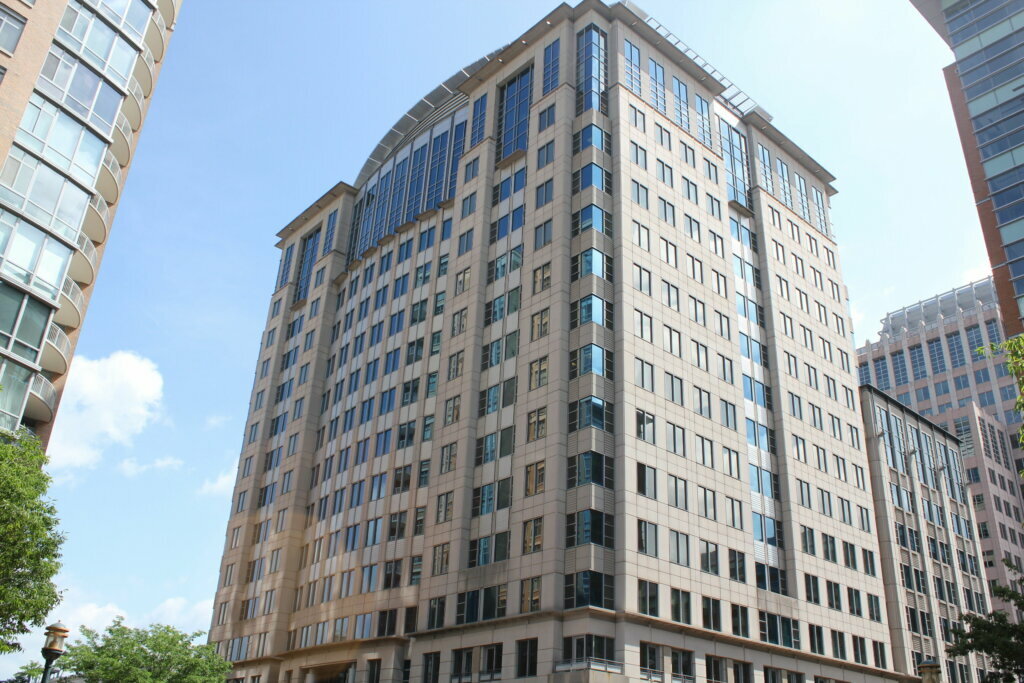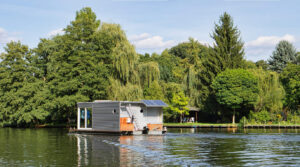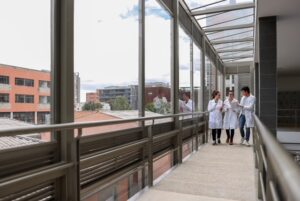Lease data shows that big tech has an increasingly large footprint in the region

We recently noted Montgomery County’s challenges in the attracting and retaining employers in industries that generally pay high wages. And we already know that those investments have enabled some jurisdictions in the region to reduce property tax rates (*gasp*). One topic I have been wanting to dig into is the regional real estate footprint of some of the biggest names in tech. This real estate footprint includes not only traditional office space, but also space that might be more appropriately labeled “flex” or “industrial,” such as data centers and fulfillment centers, that are critical to the overall operations of some of these firms.
Of course, everybody knows about Amazon’s HQ2, which is set to include 2.1 million square feet of corporate offices and result in transformative investments in Arlington and also has led to some significant investments in addressing regional public policy challenges. But one thing you might not know is just how large Amazon’s real estate footprint is already. Across the DC regional market, Amazon’s 65+ leases amount to 11.1 million square feet of commercial real estate, based on my review of third-party vendor data. So, how much of that substantial footprint is in Montgomery County? As best I can tell, the answer is 98,000 square feet.
What?! For comparison’s sake, Amazon’s regional footprint is larger than the size of the entire Silver Spring commercial real estate footprint (7.4 million square feet of office, 3.1 million square feet of retail). You’d think that some of that bounty would just fall into our laps, given the more than 5 dozen leases and an enormous (and growing) real estate footprint. And yet, by my count, the total Mo Co real estate footprint of the behemoth is only 0.9% of its regional total.
Another big tech firm that is gobbling up real estate across the DMV is Microsoft. Overall, it appears that Microsoft’s real estate footprint in the region is 2.8 million square feet and growing. Montgomery County’s share? Try 53,000 square feet, down about 60% from a few years ago, and representing only 1.9% of Microsoft’s regional real estate footprint.
Well, that’s just two companies you say…but the other leviathans tell a similar story. Facebook has 260,000 square feet in the region, of which zero are in Mo Co. IBM has 255,000 square feet in the region, of which 0.6%, or 1,600 square feet are located in the County. Cisco has a small footprint in the region, but there at least we are home to 22,000 of the company’s 135,000 square feet in the regio. I could go on, but you get the idea.
These and similar big tech firms will continue to grow, both in terms of their office needs in the DC region and in terms of their cloud computing and fulfillment center investments. Montgomery County residents and businesses are going to continue to order from Amazon and other online retailers, will continue to use these infernal machines, and will continue to store data in the magic cloud. But that money is not staying in Montgomery County, it is crossing the virtual American Legion Bridge and resulting in lower property tax rates for many Virginia residents.
Incentives have played a role in Virginia’s success
Virginia spending on incentives has really ramped up in recent years, and some recent deals indicate that the Virginia is offering and closing larger incentive deals than the combined Mo Co /Maryland efforts. Based on Montgomery County’s most recent Economic Development Fund report, the County’s recent deals have averaged about $3,100 per job from the County and Maryland leverage of 2.6 (so an estimated $8,100 per job from the State). That isn’t going to get it done if Virginia is going to spend aggressively on deals like the most recent Microsoft incentive ($22.5 million for 1,500 jobs in Reston = $15,000 per job).
And those incentives are on top of generally having a more favorable business environment and verifiably lower net taxes on many key industries (and here, in addition to linking to my own recent report based on public data, I will link to this handy tool using slightly older data but put together by a liberal think tank). What the database shows is a significant difference in Maryland & Virginia net tax rates on firms in the data processing industries. If you want to go straight to the source and check out the latest data in the Bureau of Economic Analysis accounts, have at it! You’ll want to focus on two datasets: SAGDP5 and SAGDP6, which can be found along with other data related to annual gross domestic product by state.
Wrapping up
Regarding data centers specifically, my colleague has been doing some work recently that will find its way into Mo Co Economy Watch soon. But this broader problem of tech jobs, tech investments, and tech firms all coincidentally landing elsewhere is one that should have us all asking whether there isn’t…you know…a reason. In any event, the firms of tomorrow have chosen and continue to choose other locations in the region, and that seems like a pretty bad omen for the future of Mo Co’s economy.
I’d be interested to hear from local policymakers, real estate professionals, and economic developers. What can or should we do to try to capture a non-zero portion of that growth? And why do you think it is that our outcomes are so different than those of other jurisdictions in the region? Feel free to touch base and share your perspective with me – I can be reached at jacob@harpswellstrategies.com.











